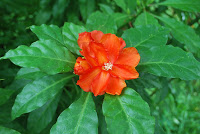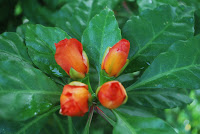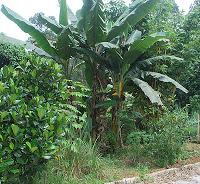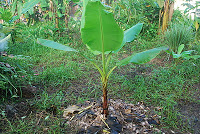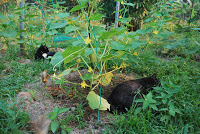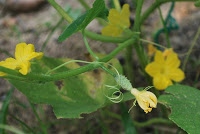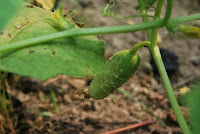Growing Cabbage
 I love cabbage – raw or cooked. I find that this vegetable is very versatile. Cabbages are rich in vitamin A and C. and Calcium. It is also a good source of Thiamin, Iron, Magnesium, Phosphorus and Potassium, and a very good source of Dietary Fiber, Vitamin K, Vitamin B6, Folate and Manganese
I love cabbage – raw or cooked. I find that this vegetable is very versatile. Cabbages are rich in vitamin A and C. and Calcium. It is also a good source of Thiamin, Iron, Magnesium, Phosphorus and Potassium, and a very good source of Dietary Fiber, Vitamin K, Vitamin B6, Folate and Manganese
Thus I began to experiment planting it from store-bought seeds. I sowed the seeds into 6″ polybags in a rich, organic soil mixture. It took about 3 days for it to begin to sprout. According to the seed package label, it should be transplanted in 3 weeks. I did transplant into bigger polybags in about 3 weeks but it was based on the growth of the seedlings – I transplanted them when the width of the plant was the same as the diameter of the polybag.A moist soil is important for its growth with a regular watering, never letting the soil dry out. I fertilized it every 10 days with organic fertilizer to ensure continuous supply of nutrients. To keep pests away, I use organic pest deterrents such as serai wangi mix and I check the leaves often to remove any “creepy crawlies”. I find the cabbage plant to be beautiful, like a big, green flower.
 For people with limited space, you can plant them in big planters where it can serve a dual purpose – providing a lovely plant to grace your landscape and at the same time, producing a vegetable for your consumption. Normally, cabbages are planted in rows of soil beds but at the farm, I plant it in polybags to enable me to better care for them and also to prevent the farm animals from damaging them. It is imperative to ensure that it receives sufficient water so I water it twice a day once it has been transplanted.
For people with limited space, you can plant them in big planters where it can serve a dual purpose – providing a lovely plant to grace your landscape and at the same time, producing a vegetable for your consumption. Normally, cabbages are planted in rows of soil beds but at the farm, I plant it in polybags to enable me to better care for them and also to prevent the farm animals from damaging them. It is imperative to ensure that it receives sufficient water so I water it twice a day once it has been transplanted.
 To enable a relatively constant supply of this vegetable, I have sown seeds about 1 month apart so I have plants at various stages. After transplanting, it takes almost 3 months before they are ready for harvest. Once the head begins to form, I stop fertilizing and just ensure that the plant receives sufficient supply of water. I place the plants in my greenhouse to help reduce pests attacks. The plants does well with lots of sunshine so if you are planting it on a balcony, be sure to allow it to receive around 6 hours of sunlight so a east facing balcony is best – allowing maximum sunglight with less heat.
To enable a relatively constant supply of this vegetable, I have sown seeds about 1 month apart so I have plants at various stages. After transplanting, it takes almost 3 months before they are ready for harvest. Once the head begins to form, I stop fertilizing and just ensure that the plant receives sufficient supply of water. I place the plants in my greenhouse to help reduce pests attacks. The plants does well with lots of sunshine so if you are planting it on a balcony, be sure to allow it to receive around 6 hours of sunlight so a east facing balcony is best – allowing maximum sunglight with less heat.
From my experience, it takes almost 4 months for the cabbage to be ready for harvest so I have to exercise patience but I feel that it is well worth the effort. Being pesticide-free, I enjoy eating the cabbage raw – as an ulam or salad. You can also make coleslaw, stir-fry it as a vegetable dish, cooked as with spices and/or chili, pickle it, use it as a wrap for baked dishes, an item in sayur lontong – the options are endless. So try growing it in a pot and enjoy the fruits of your labor :).
Notes – Lessons learnt:
- Soil mixture should be “light” and contain high organic content to ensure a moist growing medium and ease for root growth.
- Pest repellent are essential to produce beautiful cabbages.
- Fertilization during growth stage before formation of the cabbage head is important to ensure a good size cabbage.
- Lots of sunshine.
- Never let the soil to dry out – water is critical to good growth. Insufficient water will result in smaller size cabbage heads.























